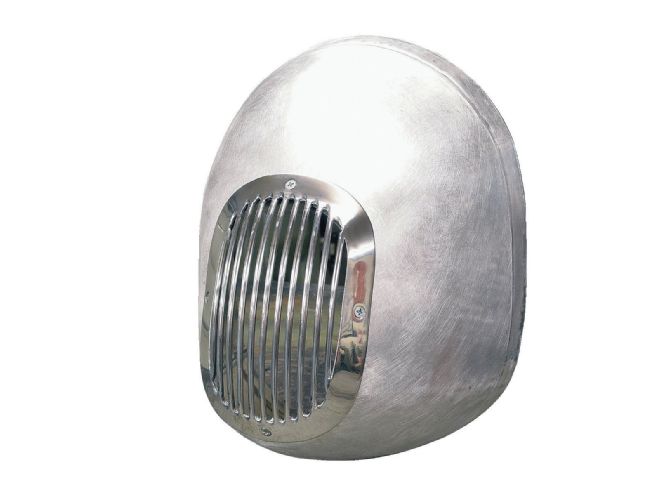
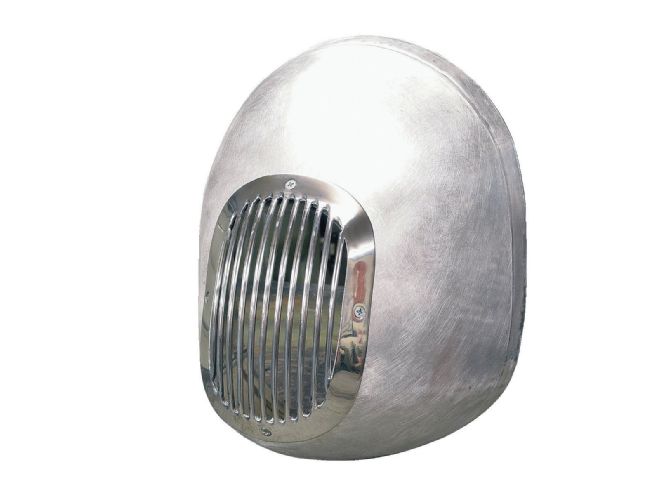
Our pal Frank Wallic is like the cobbler whose kids go shoeless. For years he’s made these restoration-grade aircraft seats and Sprint Car noses. And while he’s built a few personal cars, he’s never really treated himself to his own goodies. “I figured it was about time to do something for me,” he says. So he made a midget-style nose not for a car but to do nothing but hang on his wall.
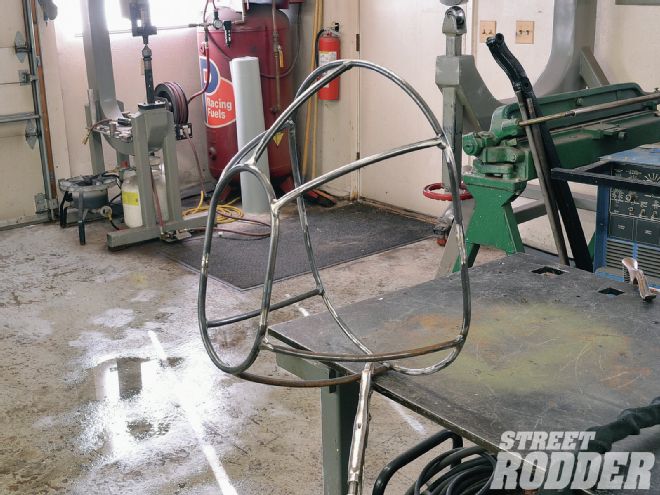 The rod in the buck defines six general areas (three on each side). Wallic cut six pieces of 0.063-inch aluminum in the general shape of albeit a little larger than those areas.
The rod in the buck defines six general areas (three on each side). Wallic cut six pieces of 0.063-inch aluminum in the general shape of albeit a little larger than those areas.
Actually that last part is only half true. He really did make a nose for a piece of personal wall art but he made the particular one in this article for a soap-box derby car. It gets even better: you could say the car’s pilot is in his second childhood (think closer to 80 than 8).
The real story is how he did it. Prevailing skeleton-buck construction favors plywood as it shapes and assembles easily. But Wallic used bar stock instead. It’s basically a variation of the wire-buck idea only with thicker materials (3/8 inch) that promise to hold their shape to a greater degree. Admittedly the idea was born of convenience: Wallic has a ring roller to make stands for his wife’s flower pots.
He discovered a few benefits. For one, his new bucks offer nearly infinite clamping positions. “But the best part is that you can weld right on it and it won’t catch fire like wood will,” he observes. What’s more, unlike thin wire it won’t deflect so easily. “That’s really nice because it keeps everything from moving around while you’re welding.” Storage, it turns out, is easier with a steel buck. “When you’re done you can just chuck it outside. You can’t do that with wood. It’ll go to hell if it gets wet.”
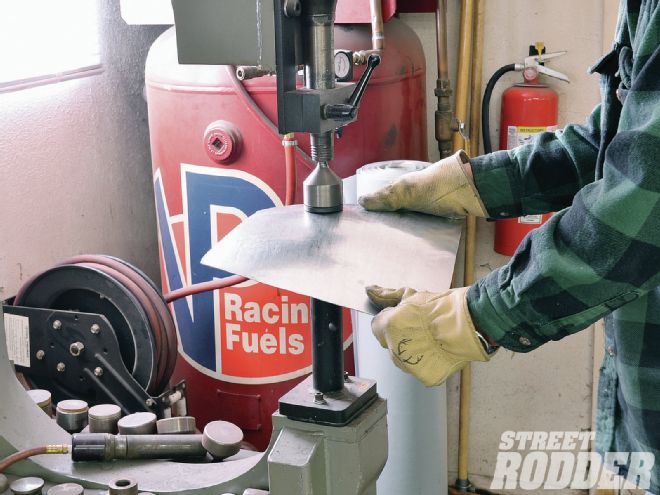 Though Wallic used an English wheel and power hammer to shape and planish the metal, he noted that with a little bit of effort and a lot more muscle a mallet and a shot bag could easily form the general shape and a dolly and hammer could finish it.
Though Wallic used an English wheel and power hammer to shape and planish the metal, he noted that with a little bit of effort and a lot more muscle a mallet and a shot bag could easily form the general shape and a dolly and hammer could finish it.
The remainder of the nose’s construction follows pretty standard procedure. Wallic used 3003-series half-hard aluminum in 0.063 inch for the skin, 1/8 inch for the grille opening, and 1/4-inch round stock for the grille bars. If there’s any further variation to his technique it’s that he welded with TIG/GTAW. Sheet-aluminum fabrication usually favors acetylene for its soft, workable weld bead (ordinarily aluminum TIG/GTAW beads crack when worked or shaped). But as others have, Wallic found that beads made with softer 1100-series filler rod (basically pure, un-alloyed aluminum) can withstand even fairly rigorous shaping even if made by TIG/GTAW.
Wallic uses some pretty fancy tools: English wheel, power hammer, ring roller, TIG/GTAW welder, and so forth. But this job lends itself to simpler, inexpensive, traditional tools. For example, the steel rod can be heated with an acetylene torch and bent around pretty much any non-flammable thing with the right radius. The bodies of some of the most valuable old Ferrari race cars were pounded out with mallets on tree stumps and shot bags and finished with dollies and hammers. With a little bit of practice the same acetylene kit used to shape the buck will produce some of the best and softest welds possible in aluminum.
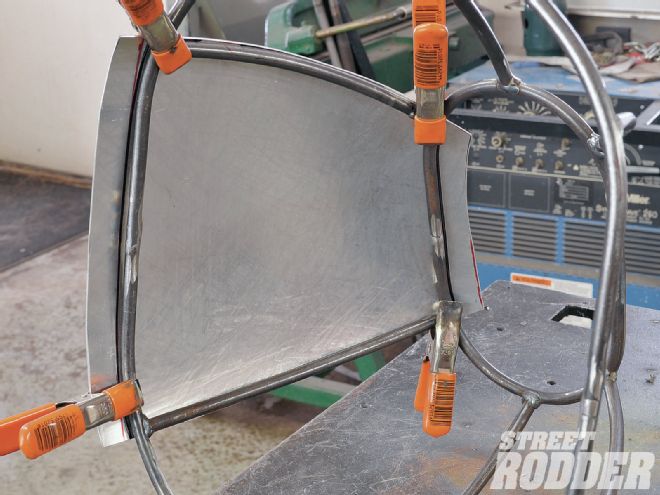 The bar-stock buck has several advantages over wood. In this case the open structure reveals panel fit. It also offers a sturdy clamping surface.
The bar-stock buck has several advantages over wood. In this case the open structure reveals panel fit. It also offers a sturdy clamping surface.
Whichever way you choose to do it, a nose like this really is within the grasp of most well-heeled amateurs. And don’t say you don’t have the time to learn. After all, our pal Frank Wallic found enough time to pull this off. And all it does is look cool on a wall in his house.